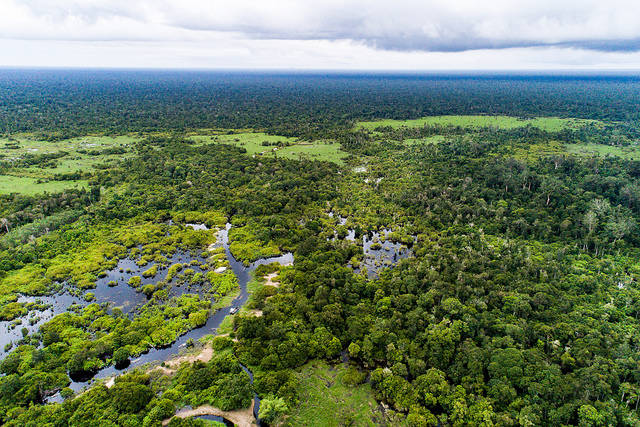
In terms of ecosystem, we can assume that Peatland is the richest vegetation and carbon storage ecosystem. It has 3.5 per cent found on earth. The area of peat swamps in Indonesia is around 20.6 million hectares, and the location mostly takes place on four large islands, namely Sumatra 35 per cent, Kalimantan 32 per cent, Sulawesi 3 per cent and Papua 30 per cent. Currently, the condition of peatlands in Indonesia is undergoing a very rapid decline over ten years. There have a total number of 2.2 million hectares Indonesia’s peatlands degraded.
Dean of the Faculty of Forestry UGM, Dr. Budiadi, said that one of the causes of peatland damage was land fires and had a large environmental and economic loss. It also has an impact on the loss of biodiversity of peat ecosystems and increasing greenhouse gas emissions. “Management of peatlands without burning as an option to support revegetation and agriculture on peatlands. This is an effort to preserve peat ecosystems as a buffer of life and sustainable management of peat ecosystems,” Budiadi said in a national online seminar entitled Land Management without Burn in Supporting Optimization of Peatlands Revegetation and Agriculture on Tuesday (24/7).
According to him, to encourage the management of peatlands without burning, there should be an increase in the socialization of environmentally friendly and productive peatland management so that the wider community can understand the importance of preserving peatlands for environmental health in the future. “It is necessary to build community participation in peat restoration and provide solutions for environmentally friendly use of peat through the development of local knowledge and innovation,” he said.
According to him, some farmers still use the practice of burning in preparing their land. Therefore, increasing education and awareness of farmers in managing peatlands in a wise and environmentally friendly manner is necessary. In addition, innovative activities for preparing land without burning and using organic fertilizers are expected to increase peatland productivity both in the form of agroforestry and agricultural cultivation activities on peatlands.
As is well known, the seminar organized by the UGM Faculty of Forestry also presented Dr. Ir. Suwignya Utama, MBA as Head of the BRG RI Education and Socialization Working Group who delivered about Alternative Solutions for Peat Farmers, Dr. Yumi Angelia from the Center for Environmental Education and Forestry, KLHK, who delivered material on Building Farmers’ Independence through Field Schools.
Moreover, Noor Halimah as a cadre of the Field School in Lampuyang Village, Kotawaringin Timur Regency, Central Kalimantan expressed the ups and downs of its experience in building a mini PLTB demonstration plot on peatlands. At the same time, Syahroni Sp as the Facilitator of INAGRI-SLPG-PLTB Teachers delivered material on Agroecological Agriculture: Experiences from Farmer Field School Assistance Practices.
Author: Gusti Grehenson
Translator: Natasa A

